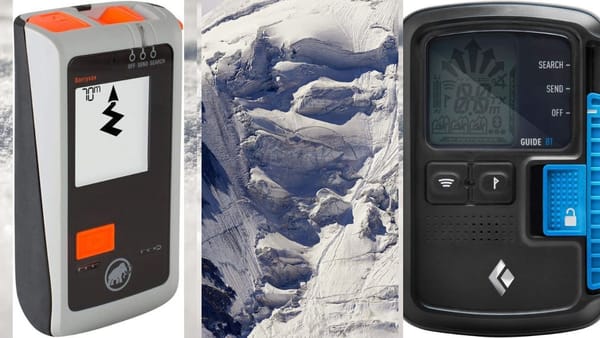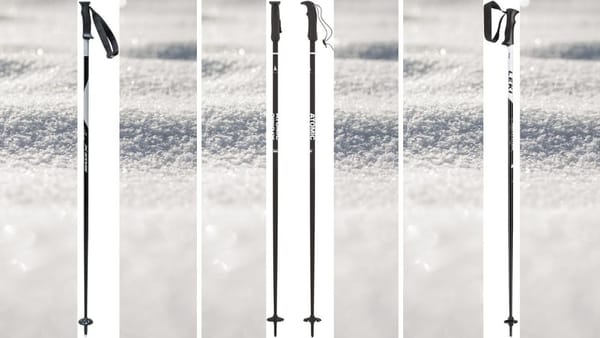Navigating the snowy slopes with fluidity and precision is the hallmark of an accomplished skier, and mastering the art of parallel skiing is the key to unlocking that grace.
Parallel skiing, where both skis run side by side, opens up a world of control, speed, and agility, transforming your descent into a seamless dance with the mountain.
In this article, we embark on a journey to demystify the techniques and nuances of parallel skiing, catering to skiers of all levels, from beginners eager to carve their first parallel turns to seasoned enthusiasts seeking to refine their skills.
Whether you're looking to conquer challenging terrain or simply enhance your overall skiing experience, understanding and mastering the fundamentals of parallel skiing will undoubtedly elevate your prowess on the slopes.
The thrill of skiing down the slopes is a feeling like no other. But if you’re looking to take your ski game up a notch, then it’s time to learn about parallel skiing!
Here’s everything you need to know about parallel skiing.
What Is Parallel Skiing?
Parallel skiing is a fundamental technique in alpine skiing where both skis run side by side, creating a parallel alignment throughout a turn.
This technique represents a departure from the beginner's snowplow, allowing skiers to experience enhanced speed, control, and fluidity on the slopes.
In parallel skiing, the skis carve matching paths through the snow, facilitating smoother turns and increased maneuverability.
Achieving parallel alignment involves shifting weight effectively, rolling the ankles and knees into turns, and maintaining a balanced and centered stance.
Whether you're cruising down groomed runs, navigating challenging terrain, or seeking to advance your skiing skills, mastering the art of parallel skiing opens up a world of possibilities for skiers of all levels, transforming the descent into a graceful and exhilarating experience.

How Do I Get Started with Parallel Skiing?
The first step in mastering parallel skiing is to practice basic downhill techniques as much as possible. This will help you develop your core skills and become comfortable with how the skis feel beneath your feet.
Once you have mastered the basic downhill technique, start practicing parallel turns by aligning your skis in a “V” shape and leaning forward slightly while turning.
As you progress, practice carving turns where both skis remain completely parallel throughout the turning process. This will require more balance and precision but will increase your speed even further once mastered!
When Should I Start Parallel Skiing?
Most experts recommend taking some time to master basic downhill techniques before attempting parallel turns or carving techniques.
That being said, there are plenty of beginner-friendly slopes that are perfect for those just starting with parallel skiing!
If you’re looking for a place to start, try finding a slope that has a gradual incline so that you can get used to how it feels before moving on to steeper terrain.

Conclusion
Parallel skiing is an exciting way to take your ski game up a notch! With some practice and dedication, anyone can learn how to master this intermediate-level technique in no time at all!
So grab your gear, hit the slopes, and get ready for some serious shredding! Good luck!
FAQ's
1. How do I start learning to parallel ski as a beginner?
Answer: Begin by mastering the snowplow technique for basic control. As you gain confidence, gradually shift your weight to one ski and practice making parallel turns on gentle slopes.
2. Is it necessary to take lessons to learn parallel skiing?
Answer: While self-learning is possible, taking lessons from a qualified instructor can accelerate your progress. They provide valuable feedback and tailored guidance to improve your parallel skiing technique.
3. What is the key to maintaining balance while parallel skiing?
Answer: Focus on keeping your weight centered and slightly forward. Bend your knees and ankles, maintaining an athletic stance. Avoid leaning too far back or forward, as this can compromise balance.
4. Can I parallel ski on all types of terrain?
Answer: Parallel skiing is versatile and suitable for various terrains. Start on gentle slopes to practice, and as your skills advance, you can confidently tackle steeper and more challenging runs.
5. How do I initiate a parallel turn?
Answer: To initiate a parallel turn, shift your weight to the ski you want to turn towards. Roll your ankle and knee into the turn while maintaining a subtle edge on the other ski. This helps guide your skis smoothly through the turn.
6. Should I use my ski poles differently when parallel skiing?
Answer: Use your ski poles for balance and rhythm. Plant the pole in the direction of the turn as you initiate it, helping maintain stability and providing a visual cue for your movements.
7. How can I overcome the fear of parallel skiing on steeper slopes?
Answer: Gradually progress from gentler slopes to steeper ones. Practice controlled parallel turns on each level, and as your confidence grows, you'll become more comfortable navigating steeper terrain.
8. Are there common mistakes to avoid when learning to parallel ski?
Answer: Common mistakes include leaning too far back, not committing to the turn, and neglecting proper weight distribution. Focus on maintaining a balanced stance and committing to each turn.
9. Can I parallel ski in powder or challenging snow conditions?
Answer: Yes, parallel skiing is adaptable to various snow conditions, including powder. Adjust your technique by keeping your skis closer together to navigate deeper snow while maintaining a parallel stance.
10. How long does it take to become proficient at parallel skiing?
Answer: The time it takes to become proficient varies. With consistent practice and focused learning, many skiers make significant progress within a few days to weeks. Continued practice and refining your skills will lead to increased proficiency over time.












Member discussion